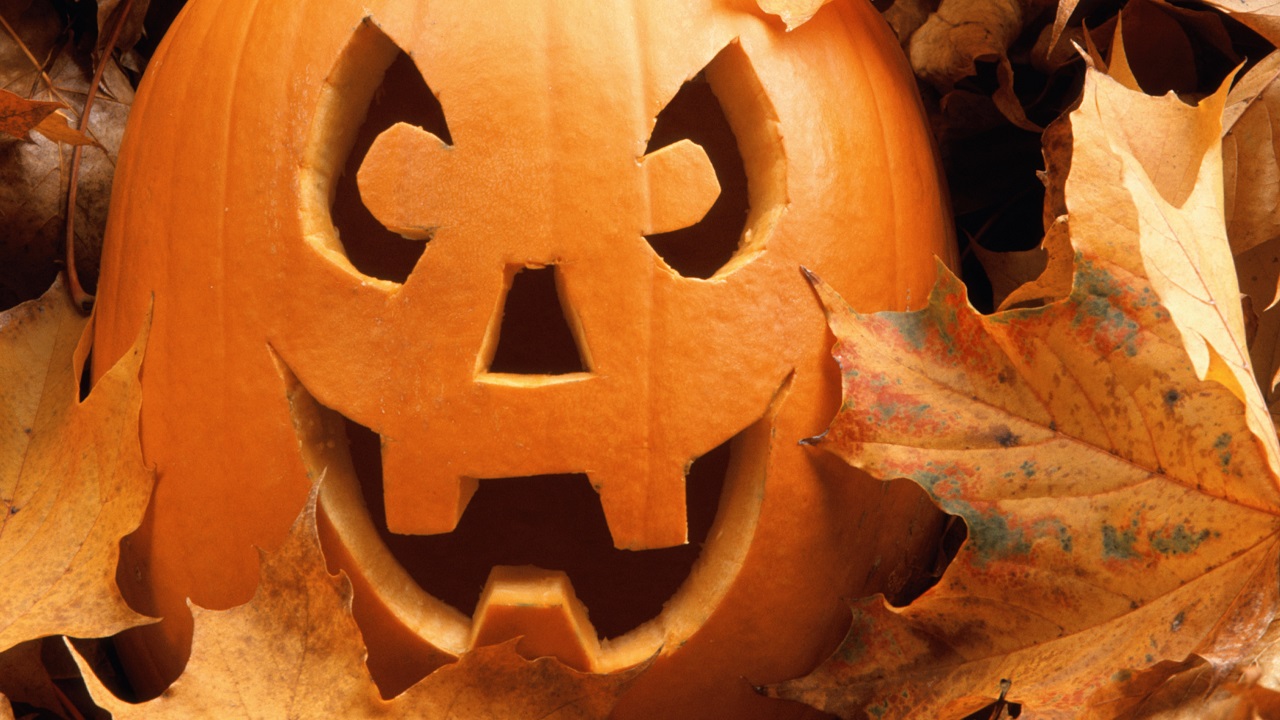People of all ages look forward to Halloween each year. Costumes, candy, haunted houses and festive parties set this holiday apart from all the others, but how do you help an elder celebrate All Hallows’ Eve in a safe, fun and healthy way? Use these tricks to treat your loved one to a senior-friendly Halloween celebration.
Of course, be sure to keep COVID-19 prevention measures in mind this year. Get vaccinated, practice good hand hygiene, maintain social distancing and wear masks when appropriate. Take this opportunity to make your face covering a spooky-fun one! These precautions are especially important for seniors who are at higher risk for severe illness from COVID-19.
How to Ensure a Happy Halloween for Seniors
Choose healthy treats to haunt your home and candy bowl.
Whether you plan to hand out goodies to trick-or-treaters or simply spend a low-key evening at home with your loved one, make sure you have healthy treats on hand. Try to pick something festive and enjoyable that doesn’t stray too far from your loved one’s recommended diet.
As a special treat, you and your elder can indulge in some dark chocolate, which is lower in sugar and fat than milk varieties and even packs some immune-boosting antioxidants. A celebratory dessert made with natural and/or sugar-free ice cream is another option that will delight your loved one. Provide healthy topping options like chopped nuts, fruit and granola that they can choose from to make their own tasty creation. This will boost their intake of nutrients like potassium, vitamin C, dietary fiber and protein.
There are countless options for healthy Halloween treats for elderly loved ones, but keep in mind that some older adults may have difficulty eating certain foods. A loved one who has difficulty swallowing may fare better with a celebratory smoothie or bowl of pudding.
Recipes for delicious Halloween-themed dishes—both savory and sweet—abound on the internet. Just be sure to include any dietary restrictions in your query, such as sugar-free desserts, low-sodium appetizers, etc.Plan your “paranormal” activities appropriately.
In previous years, your loved one may have enjoyed the excitement of handing out candy to trick-or-treaters and seeing neighborhood children in their costumes. This year it might be safest to watch from the window or video chat with younger generations to feel a part of the celebration, especially if your loved one has a weakened immune system and/or has not been fully vaccinated yet. Vaccination rates continue to increase, but a vaccine still has not officially been approved for children under age 5. Keep in mind that kids can get COVID-19 and infected individuals can still spread the virus to others even if they’re not showing symptoms. Encouraging your loved ones to participate is a great way to get everyone into the spirit of Halloween, but carefully review current CDC guidance for activities, gatherings and holidays and weigh the risks before making any plans.
Be thoughtful when planning Halloween activities for seniors. Some older adults may not interact well with children or be able to handle the hubbub. In this case, post an easily visible note in your driveway or on your front door that says, “Sorry, no more candy,” or “No trick-or-treaters, please.” This can be especially important for loved ones who have dementia.
Most trick-or-treaters make their rounds at dusk or just after dark, which may coincide with the onset of sundowning symptoms. For a senior with Alzheimer’s disease or another form of dementia, confusion and agitation are often heightened at this time of day. Excessive noise, the coming and going of strangers, and costumes can be extremely disorienting and even frightening. Making healthy treats together, watching a not-too-scary movie and engaging in simple holiday crafts can be great low-key distractions. If you both choose to participate in Halloween festivities, be sure to remain attentive and aware of your loved one’s mood and comfort level throughout the evening.Keep seasonal décor spooky yet safe.
Houses can be decorated to celebrate the height of the fall season with pumpkins, wreaths of fall foliage and cinnamon brooms, or they can be made into sinister dwellings full of cobwebs, spooky figurines, bats and spiders. Regardless of how you wish to decorate, make sure that none of these items presents a tripping or fire hazard. One of the best ways to do this is to place larger decorations outside on the lawn and keep indoor embellishments to smaller accents.
Décor may be out of the question for a loved one who has dementia, especially if they are prone to hallucinations, delusions or paranoia. Decorative touches that we think are tame may be confusing or cast shadows that are extremely unsettling or bothersome for an elder with cognitive impairment. Dementia patients’ brains process sensory stimulation in ways that can be scary or overwhelming. You know your loved one best, so decorate in a safe and considerate way.Make costumes creative and comfortable.
For some, dressing up is the best part of celebrating Halloween. If your loved one wants and is able to, assist them in making a costume and let them show it off on Halloween night.
Keep in mind that complicated clothing may make it difficult to walk and/or manage trips to the restroom. Ideally, Halloween costumes for seniors should be safe and comfortable to wear and should not hinder your caregiving duties. This will ensure both of you can enjoy the festivities without hassle.
Holidays like Halloween can be enjoyed by people of all ages. Help your aging loved one celebrate in a fun and healthy way, and remember that there’s nothing wrong with a little bit of indulgence and kookiness every so often!
